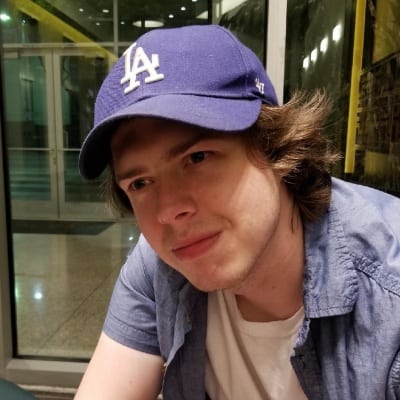Intrerview: Producer Jerry Bruckheimer Brings ‘The Lone Ranger’ Back to Life
After the massive production of The Lone Ranger, it’s surprising Jerry Bruckheimer didn’t show up to the film’s press day all gray-haired and jaded. The 10-month shooting schedule aside, the film went through pre-production halts, budget issues, and creative battles. That must be stressful for anyone, but it’s probably something Bruckheimer deals with fairly often.
From Bad Boys II, Beverly Hills Cop, the Pirates series, to, best of all, Michael Mann’s Thief, Bruckheimer has produced some of the general public’s, and film nerds’, favorite films of the past 20 or so years. Whether The Lone Ranger will stand among Bruckheimer’s biggest hits has yet to be determined, but it’s unquestionably a passion project for the main players involved. I mean, who wouldn’t get passionate about the idea of Johnny Depp playing a Native American who feeds a dead bird? Bruckheimer did, alongside once again joining forces with director Gore Verbinski and making a Western-as-summer-action-blockbuster.
In a roundtable interview down in New Mexico, we spoke with Bruckheimer about the difficulty of making a Western today, pesky weather, and working with Verbinski:
This is your fourth collaboration with Mr. Depp and Mr. Verbinski. What do you think makes that pairing work?
There’s a creative energy Johnny and Gore bring to everything. The synergy of those guys come in together and they can create together. Johnny can come up with an idea, which Gore will top. The whole thing about the bookends is something Gore brought in, which Johnny loved. Johnny came up with the whole feeding the bird [gag], too.
The backdrop of the railroad is something we talked about. There’s such a creative familiarity between us that there’s no agenda for us besides making a good movie.
You’ve talked about the idea of a resurgence in Westerns. Where do you see that going?
If we’re successful, there will be. That’s just how it works. I mean, look at the Pirate shows and all of that. Once you have a successful movie, there will be more of them.
You mentioned way back while promoting Bad Company that you’ve been trying to make a Western. What’s the difficulty behind getting a Western made?
I think the conventional wisdom is the same with Pirate movies. You just have to come at it with a different angle, and I think this Western does.
There’s a contrast between drama and comedy in this movie. Is that a tough balance?
I think that’s something Gore does. He’d have scares in Pirates and then something very funny. He has a tone he likes to do, from the dirty realistic to the absurd.
You’ve said before how you prefer to lean more on the soapy side than being cold and clinical. When it comes to blockbusters, why does your taste lean more on that side than the more gritty modern blockbusters?
I think I like both. We did Black Hawk Down which was a very honest depiction about that time. We like to do both: films with fantasy and some that are very realistic.
There’s the running joke over “nature being out of balance” in the film. Where did that come from?
Initially we had coyotes that were supernatural, too, but that went by the wayside. We also had a locust storm we never shot. There was always meant to be a supernatural twist to it.
This is a movie that faced a lot of challenges. From a storytelling and technical standpoint, what did you find the most challenging?
The weather [Laughs]. I don’t know if you saw the making-of, but my God…I mean, it’s a little breezy today, but when we were shooting in Santa Fe there were 20-to-30-mile winds in the desert. We all had goggles and our mouths covered. Physically, it was very challenging.
Do you still find challenges? I imagine you’re used to dealing with weather issues by now.
You still do. I mean, it’s hard to tame mother nature. We go from a stormy blizzard to an average of 120 degrees. It doesn’t help the guys carrying those heavy cameras around.
And you guys wanted to shoot on location?
That’s the way Gore loves to do it. Some like to shoot on a studio lot, but he likes to go out there and deal with those elements.
Did you consider any other locations?
You know, it’s sad, because what drives you now is where you get the tax credits. We would have loved to have shot some of it in California, but we couldn’t afford to. You don’t get the credits in California.
How did you first meet Gore?
We saw some commercials he had done before Mouse Hunt. I thought he was enormously talented. He did some other pictures and we were enormously lucky he wanted to do Pirates.
What do you usually look for in a filmmaker?
Uniqueness. I want somebody who gives you a different vision, is usually very visual, and has a sense of humor. Sometimes you want someone who’s a little dark. I mean, I had worked with Ridley Scott on commercials before we made a movie together. I always thought he was an enormously talented filmmaker.
The last 30 minutes of the film really becomes the film you expect with The Lone Ranger riding to William Tell overture. If future installments are in the cards, do you see the sequels taking on that more overtly playful tone?
It’s going to depend on the filmmaker. If it’s a different filmmaker, they’re going to come in with a different point-of-view. If it matches yours, then great. Gore has a way of balancing tones. He’s a master at it.
The Lone Ranger is now in theaters.
Related Topics: Johnny Depp

